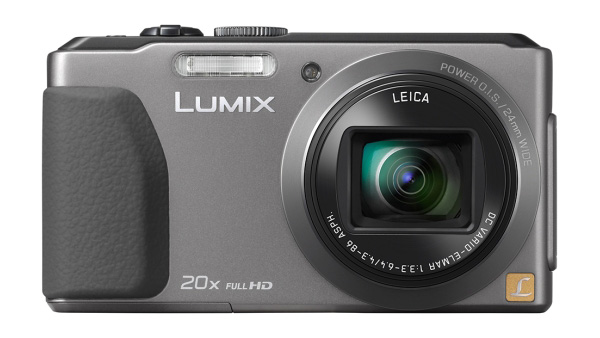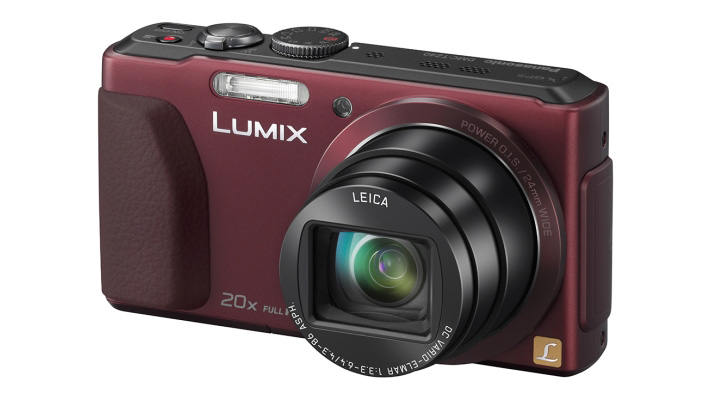TechRadar Verdict
Pros
- +
Good zoom length
- +
Touchscreen
- +
Digital filters
- +
GPS and Wi-Fi
Cons
- -
No raw capture
- -
Wi-Fi functions could be better
Why you can trust TechRadar
Panasonic has replaced its flagship travel compact camera, the Panasonic TZ30 (known as the Panasonic ZS20 in the US) with the Panasonic TZ40 - called the Panasonic ZS30 in the US.
The new Lumix TZ40 shares a few of the same specifications as its predecessor, most notably the same 20x Leica optical zoom lens. This covers a 35mm equivalent focal length of 24-480mm.
Read our hands on review of the
which replaces the TZ40
It has a new 18.1 million pixel high sensitivity MOS sensor and a new Venus processing engine that has been designed specifically with improving low-light images in mind. Power Optical Image Stabilisation (OIS) is also said to have been improved, working to correct accidental movement around five axes to enable sharper images in low light and at telephoto focal lengths.

The Panasonic Lumix DMC-TZ40 also has built-in Wi-Fi, and interestingly also comes with a Near Field Communications (NFC) chip. This enables connections between other NFC devices - such as smartphones or tablets - merely by touching them together, rather than having to follow a series of steps, searching for the correct network and so on.
Sign up for breaking news, reviews, opinion, top tech deals, and more.
Although NFC is a growing technology, it's yet to be taken up by Apple, and as such you won't find it in iPhones and iPads. The Samsung Galaxy S4 and other big selling smartphones, however, do have this feature. It's widely rumoured that the iPhone 5S will include it as well.
Whether you have an NFC device or not, the camera can be paired with a smartphone to act as a remote device and to share images remotely. Like the Panasonic TZ30, the Panasonic TZ40 also has GPS technology built in, with Panasonic also adding GLONASS, the Russian equivalent, for improved coverage.

As with the Panasonic TZ30, the Panasonic TZ40 has a resistive touchscreen, but its resolution has been boosted to 920,000 dots, from the previous 460,000 dots. The new screen is also "multi-touch" sensitive, meaning you can use gestures, such as pinch to zoom to magnify images and swiping to browse through shots in playback mode.
The Panasonic TZ40 is designed to be an advanced camera, and as such it has a full range of fully manual and semi-automatic modes. It doesn't have the capability to record in raw format, though.
Keen to appeal to as wide a range of photographers as possible, Panasonic has also included a number of creative functions, including digital art filters, which are now available - for the first time - in conjunction with panoramic images.

As you'd expect, fully automatic and scene modes are also available.
The Panasonic TZ40/Panasonic ZS30 is priced at £329/US$399/AU$499. With its long focal length and range of advanced functions, it goes head to head with the likes of the Sony Cyber-Shot HX30V, Samsung WB850F and Canon PowerShot SX260 HS.
At the same time as the Panasonic TZ40 launched, the company also announced the Panasonic TZ35. This is basically a pared down version of the Panasonic TZ40, featuring the optical zoom but no touchscreen or GPS, and with a lower resolution (16.1 million pixel) sensor.

Amy has been writing about cameras, photography and associated tech since 2009. Amy was once part of the photography testing team for Future Publishing working across TechRadar, Digital Camera, PhotoPlus, N Photo and Photography Week. For her photography, she has won awards and has been exhibited. She often partakes in unusual projects - including one intense year where she used a different camera every single day. Amy is currently the Features Editor at Amateur Photographer magazine, and in her increasingly little spare time works across a number of high-profile publications including Wired, Stuff, Digital Camera World, Expert Reviews, and just a little off-tangent, PetsRadar.
